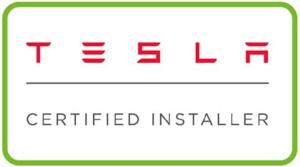Everything You Need to Know About Smart Home Systems
As the homeowner, you can control these smart devices using your smartphone, tablet, or voice commands. A home automation hub links all the devices by communicating over your home WiFi network. This allows you to remotely turn lights on/off, adjust thermostats, view security cameras, lock doors, and more based on customized schedules, usage patterns, or through direct voice control.
Some key components that enable a smart home include smart light bulbs, switches and plugs, thermostats, security systems, cameras, locks, and voice assistants like Amazon Alexa or Google Home.
Smart home technology has become popular in recent years to provide convenience, comfort, and control through home automation. The UK alone has 15 million smart homes, and 57% of all households have smart devices controlling the lights, security, vacuum cleaners, and more. But what exactly constitutes a smart home, and how does this technology work?
This article will answer all your queries. We will provide an overview of smart home systems, their key components, and the potential benefits this tech-driven innovation offers homeowners.
We will define a smart home, list the devices and platforms involved, and see how integrating artificial intelligence enables advanced features like remote access and voice control. Join us on this journey and get a sneak peek of what the future holds!
You may have heard people use the term “smart home” to describe the latest home technology trends. But what exactly makes a home “smart”? Integrating interconnected smart devices and appliances throughout your home that you can remotely monitor, control, and automate through a central hub system.
The Key Players:
These smart home devices communicate through different channels. Some of them rely on Wi-Fi and Bluetooth for connectivity, others opt for wireless protocols like Zigbee or Z-Wave. These protocols ensure devices can talk to each other and the hub. Thus, it creates a great smart home network.
How Does It All Come Together?
Let’s break down how smart home devices enhance different aspects of your life:
What is a Smart Home?
Smart Lighting: Smart light bulbs, switches and panels that can be remotely controlled and scheduled. Choose smart LEDs from Philips Hue, LIFX, Nanoleaf and more.
Smart Speaker: It is the central voice-controlled hub for many smart home ecosystems. Top options include Amazon Echo, Google Nest and Apple Home.
Smart Thermostat: Adjust home temperatures remotely while optimising energy use. Leading brands include Nest, Hive, Tado and Drayton Wiser.
Smart Plugs: Enable any appliance to be controlled and scheduled via app by plugging into a smart plug.
Security Cameras: Monitor your home remotely through video doorbells and security cameras from Ring, Nest, Arlo and others.
Smart Appliances: Fridges, washing machines, ovens and other appliances can integrate with smart home ecosystems for control and monitoring. Look for WiFi and app connectivity.
Benefits of a Smart Home
Convenience: Tasks like adjusting lighting, temperature, home security and appliances can be automated or controlled remotely via smartphone.
Energy savings: Smart thermostats and appliances optimise energy use, while smart meters provide visibility into consumption. This increased efficiency can reduce utility bills by 15% or more.
Security: Smart home security systems detect intruders and send alerts to homeowners. Smart locks provide touchless, app-based home access.
Assistance: Voice assistants like Alexa and Google Assistant provide hands-free help with information, reminders, entertainment and device control.
Independence: Smart home tech can support independent living for the elderly or disabled through safety monitoring, reminder alerts, and remote assistance.
Control: Homeowners can customise smart home systems to suit their needs and preferences, with the ability to tweak settings and automations.
Choosing a Smart Home Platform
The smart home market features ecosystems from major tech firms along with compatible devices from various brands. The main platforms include:
Amazon Alexa:
It works with Echo devices
Has wide third-party support
User-friendly app.
Google Home:
Integrates Nest and Chromecast devices.
Reliable voice assistant.
Robust third-party ecosystem.
Apple HomeKit:
Designed for iOS users.
Amazing experience but fewer compatible devices.
Samsung SmartThings
App-based system works with hundreds of devices but setup can be complex.
Start your Smart Home
Ready to get started? Begin simply with smart speakers and lighting. Focus first on rooms where you’ll get the most use from automation. As your needs grow, integrate additional devices like cameras, sensors and appliances. Take time to find the right platform and products to suit your lifestyle and home setup.
With smart home technology increasingly mainstream, homes are becoming more convenient, comfortable, secure and efficient. Our company offers a range of smart home products and installation services to help UK homeowners embrace this exciting future. Contact us today to make your home smarter.











